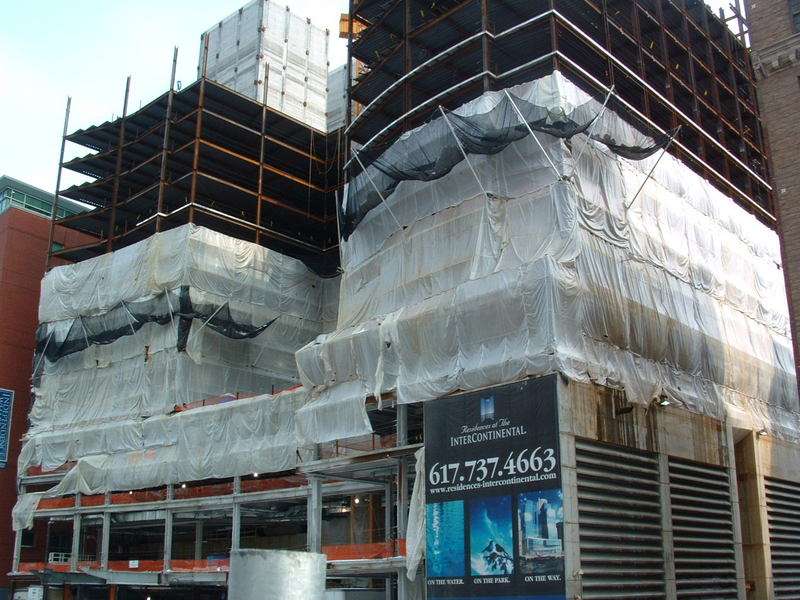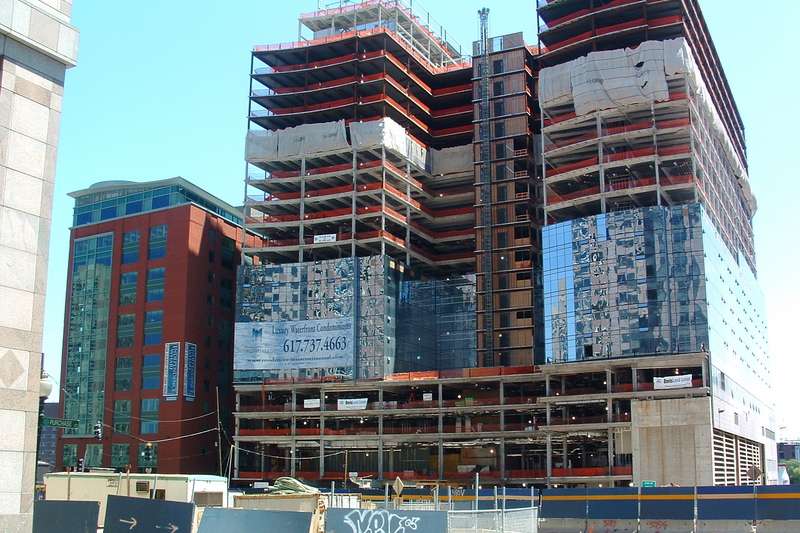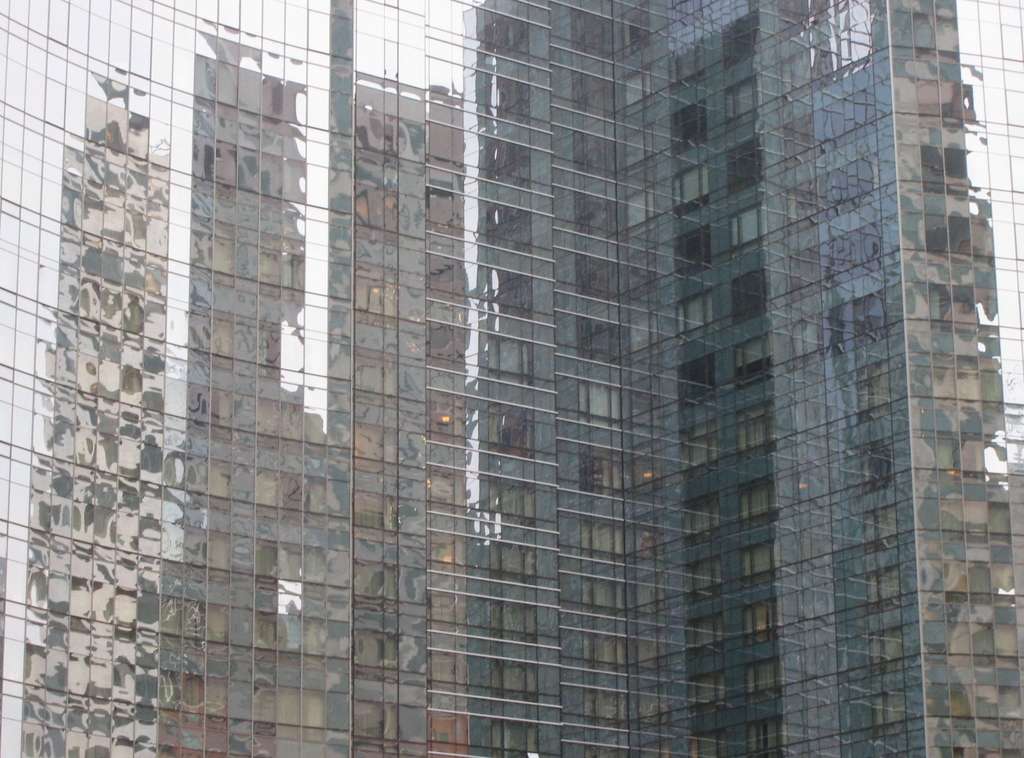History Meets Hip at InterContinental
By Thomas C. Palmer Jr., Globe Staff | November 28, 2006
'The Burger Trilogy" item on the menu at Miel restaurant in the new InterContinental Boston Hotel includes lobster, "kobe beef crowned with foie gras," and tuna nicoise. In a departure for Boston, the brasserie is open 24/7.
At adjacent RumBa, the wide, U-shaped bar is made of pewter, there are 70 premium brands of rum on hand, and cocktail tables are fashioned from second-hand Louis Vuitton trunks. A 45-seat Moulin Rouge champagne bar is trimmed in wool fabric and tufted red leather.
Such stylish details are a departure for 60-year-old InterContinental Hotels & Resorts, and for Boston too, with its conventional standards of architecture, dining, and leisure. InterContinental, the world's largest operator of hotel rooms, is now focusing on the US market -- and pursuing a younger, trend-driven demographic.
"It's a much needed property in Boston," said Bryan Rafanelli, chief executive of Rafanelli Events, which produces high-end parties for the fashionable set. "It's got a cool vibe, but it's still sophisticated."
InterContinental has generally operated properties that fit into local landscape and tastes. But the InterContinental Boston has two 22-story towers dressed in panels of mirrored glass. There isn't a red brick in sight. The exterior walls and surfaces are concave or convex, not flat.
With a "soft opening" three weeks ago and a grand opening not planned till spring, the InterContinental is already a bracing presence in Boston.
"It's another of the new buildings that's going to force us to think hard about them," said M. David Lee, a partner at the architecture firm Stull and Lee Inc., and an adjunct professor at Harvard's Graduate School of Design. "To some extent, we've been a little bit too complacent about architecture here," he said. "Without going crazy, we can stand to make ourselves a little uncomfortable in exploring new territory."
For most of its history, InterContinental operated large hotels under that name in foreign locations -- homes for diplomats and businessmen after World War II. Now, with 3,700 facilities worldwide, the company has familiar brands such as Holiday Inn, Crowne Plaza, and Candlewood Suites. InterContinental is its top-of-the-line flag.
The finished product at 500 Atlantic Ave. wrapped $310 million of high-priced living around two 268-foot-high stacks used to ventilate the Big Dig tunnels. The building houses 424 hotel rooms, as well as 130 condominiums, some of which recently sold for $725,000 to $5.5 million.
From its menus to dark wenge wood paneling to crinkly exterior glass, the InterContinental Boston represents "a cross-pollination of cultures," said Timothy P. Kirwan, general manager. But Elkus/Manfredi Architects of Boston intentionally applied aspects of Boston's maritime past to the modern structure.
"The original high-rises of Boston were the tall ships," said principal Howard Elkus. So the tops of InterContinental's two glass towers equal the height of the masts of the old tall ships.
And the curvature of the building facades, intended to mimic the billowing sails, "represents optimism and a new face for Boston in the 21st century," Elkus said.
Rum, featured in the bar, was a predominant trade item in Colonial Boston, and the pewter bar surface recalls the trade of an early Boston hero. "Paul Revere would love it," said Kirwan. "It's Boston in a new light."
The marble-floored lobby extends from the Atlantic Avenue entrance through to a plaza on the Fort Point Channel overlooking the site of the Boston Tea Party. Dark Italian marble and a two-story wall of contrasting yellow Texas limestone flank the escalators to the second floor.
There, the smaller of two ballrooms, the Abigail Adams, looks out on the South Boston Waterfront. The wallpaper is hand-painted on panels, glazed, and mounted.
Up another level, the 10,000-square-foot Rose Kennedy Ballroom -- with room for 1,200 people -- is lined with red leather and mahogany. Hotel walls feature original works from Boston artists.
By the time of the grand opening scheduled for March, InterContinental is expected to have opened yet another dining spot that stretches the imagination: Sushi-Teq. With outdoor dining on a two-acre waterfront plaza, it will specialize in raw fish, premium tequilas, and salsa music.
Boston is a good place for InterContinental to roll out its first wave of properties aimed at a younger audience. The Hub has among the highest percentages of 20-somethings within its population -- 23 percent -- of urban areas nationwide.
"Our demographics are 15 years ahead of other hotels in Boston," said Kirwan, the general manager.
Patrick B. Moscaritolo, chief executive of the Greater Boston Convention & Visitors Bureau, toured the new hotel just before it opened and said it "breaks the mold in so many different ways."
For example, putting a rum bar next to a gaily decorated French restaurant, having the large InterContinental Gardens promenade on the water, and a large lobby, with large guest rooms upstairs, Moscaritolo said, all push the limits of the Boston hotel scene.
"It's what today's global and business traveler is looking for -- wide, comfortable, open space," he said.
Still, for some, the InterContinental's style might take some getting used to.
After midnight on a recent Saturday, two couples in their 30s who had wandered into the French provincial brasserie restaurant Miel (which means "honey") were seated in white chairs amid the bright yellow decor. "I feel like I'm in 'Alice in Wonderland,' " said one woman.
Surveying a menu of socca pancakes, veloute of asparagus soup, and duck maigret, she looked up at food and beverage manager Michael Cohen, and asked: "Do you have nachos?"
Thomas C. Palmer Jr. can be reached at
tpalmer@globe.com.
? Copyright 2006 Globe Newspaper Company.



